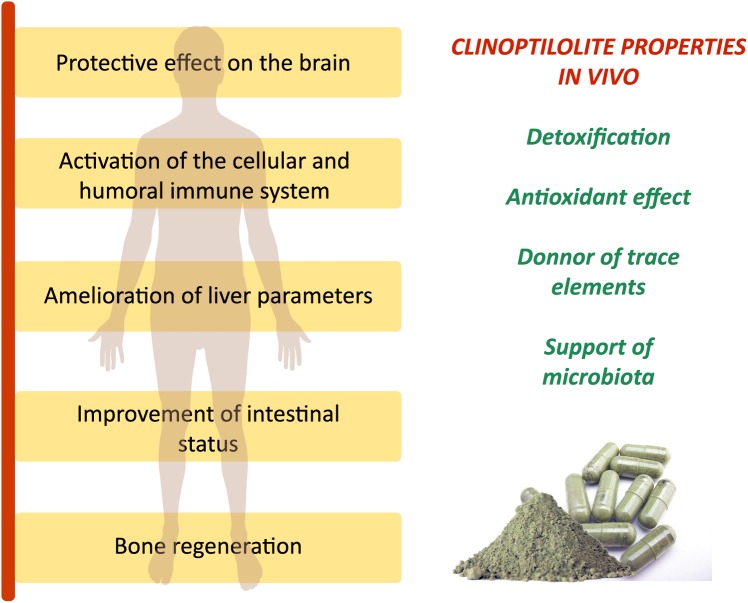# More treatments can mean more problems, not more healing
Even harmless remedies can cause harm when combined, because interactions, not the individual substances, often create problems of their own. Whether the label says “natural” or “prescription,” stacking multiple interventions can create a tangle of interactions that no one can fully analyze. In natural health, that might mean combining herbs, supplements, and specialty foods. In conventional medicine, it means layering prescriptions where side effects lead to new diagnoses, new drugs, and still more side effects. In both cases, the result can be a spiral of problems that no one can untangle.
—
## The Allure of More
When you are living with pain or illness, every success story feels like a lifeline. If a single supplement or herb seems to help, it is tempting to think that adding more will speed recovery. Online forums amplify that mindset. “If one helps, five will help more” can start to feel like common sense. Someone might start with high-dose vitamin D, then add ashwagandha, then medicinal mushrooms, then turmeric, all in the same week. This can happen whether the remedies are aimed at joint pain, autoimmune control, digestive health, or anything else.
The same logic plays out in conventional medicine. A prescription relieves one symptom, but another drug is added to manage the side effects. Then another is prescribed to treat the new condition that emerges. For example, a blood pressure medication might cause swelling, which is treated with a diuretic, which then causes electrolyte imbalances that require yet another prescription. Before long, the effects become impossible to track, and even the prescriber cannot say with certainty what is helping and what is making things worse.
—
## Is Safe + Safe Always Safe?
It is easy to assume that if one remedy is safe, and another is safe, then taking both together should also be safe. Sometimes this is true. But sometimes the combination changes how each one works in the body.
Two safe remedies can interact in ways that make the effects much stronger than expected, cancel each other out, or create brand-new effects that neither would cause alone. For example, ashwagandha and valerian might each gently lower blood pressure, but together they could drop it enough to cause dizziness. Similarly, doctors watch for drug interactions because combining medications can turn a safe dose into a dangerous one or make an effective treatment stop working.
Once you are combining multiple treatments, the possible effects multiply. At some point, determining cause and effect becomes impossible for even the most thorough researcher.
—
## A Smarter Path Forward
The only reliable way to understand whether something is helping or harming is to introduce it on its own and give it enough time to see how the body responds before adding anything else. This slower pace avoids the fog of overlapping effects that make sorting out benefits from problems impossible.
Working with a knowledgeable professional can add safety and clarity, but science does not know everything about how the body works, and no one is a statistic. Two people can respond very differently to the same combination. Even with expert guidance, it often comes down to paying close attention to your own body and your own responses.
—
## Conclusion
In health care, natural or conventional, more is not always better. Sometimes the combination itself creates the problem. A deliberate, one-step-at-a-time approach offers the best way out of the more-is-better trap—giving you the clearest path to what actually works.
—
**Read More: Research**
**Polypharmacy Research:**
Research involving 1,742,336 older adults found that 44% had polypharmacy (using 5+ medications simultaneously), and up to 11% of unplanned hospital admissions were related to harm from polypharmacy, with about 50% of these being preventable ([BioMed Central](https://bmcgeriatr.biomedcentral.com/articles/10.1186/s12877-021-02183-0)).
A study investigating drug interactions in an emergency department found that interactions were present in 16% of subjects, with rates ranging from 5.6% for those taking two drugs to 100% for those taking seven drugs ([PubMed Central](https://pmc.ncbi.nlm.nih.gov/articles/PMC10299180/)).
**Natural Supplement Interactions:**
Nearly 25% of U.S. adults report concurrently taking a prescription medication with a dietary supplement ([PubMed](https://pubmed.ncbi.nlm.nih.gov/28762712/)), yet only one-third of supplement users inform their physician ([American Academy of Family Physicians](https://www.aafp.org/pubs/afp/issues/2017/0715/p101.html)) about their use.
A UK study found that about one in three people using supplements concurrently with prescription drugs was at risk of a potential herb-drug interaction ([British Journal of General Practice](https://bjgp.org/content/68/675/e711)). Some supplements, such as St. John’s wort and goldenseal, are known to cause clinically important drug interactions and should be avoided by most patients receiving any pharmacologic therapy ([American Academy of Family Physicians](https://www.aafp.org/pubs/afp/issues/2017/0715/p101.html)).
**The Research Gap:**
Well-designed clinical studies evaluating herbal supplement-drug interactions are limited and sometimes inconclusive, and most herb-drug interactions identified in current sources are hypothetical, inferred from animal studies or cellular assays ([NCCIH](https://www.nccih.nih.gov/health/providers/digest/herb-drug-interactions)).
### Citations:
– [Polypharmacy and severe potential drug-drug interactions among older adults with cardiovascular disease in the United States | BMC Geriatrics | Full Text](https://bmcgeriatr.biomedcentral.com/articles/10.1186/s12877-021-02183-0)
– [Risk of Polypharmacy and Its Outcome in Terms of Drug Interaction in an Elderly Population: A Retrospective Cross-Sectional Study – PMC](https://pmc.ncbi.nlm.nih.gov/articles/PMC10299180/)
– [Common Herbal Dietary Supplement-Drug Interactions – PubMed](https://pubmed.ncbi.nlm.nih.gov/28762712/)
– [Common Herbal Dietary Supplement–Drug Interactions | AAFP](https://www.aafp.org/pubs/afp/issues/2017/0715/p101.html)
– [Prevalence of drug–herb and drug–supplement interactions in older adults: a cross-sectional survey | British Journal of General Practice](https://bjgp.org/content/68/675/e711)
– [Herb-Drug Interactions | NCCIH](https://www.nccih.nih.gov/health/providers/digest/herb-drug-interactions)
### More sources:
– [Medication Safety in Polypharmacy](https://www.who.int/docs/default-source/patient-safety/who-uhc-sds-2019-11-eng.pdf)
– [Frontiers | Polypharmacy, drug–drug interactions and adverse drug reactions in older Chinese cancer patients: evidence from CHARLS](https://www.frontiersin.org/journals/pharmacology/articles/10.3389/fphar.2025.1579023/full)
– [Polypharmacy – StatPearls – NCBI Bookshelf](https://www.ncbi.nlm.nih.gov/books/NBK532953/)
– [Polypharmacy and potential drug-drug interactions in home-dw | JMDH](https://www.dovepress.com/polypharmacy-and-potential-drugndashdrug-interactions-in-home-dwelling-peer-reviewed-fulltext-article-JMDH)
– [A study of harmful drug–drug interactions due to polypharmacy in hospitalized patients in Goa Medical College – PMC](https://www.ncbi.nlm.nih.gov/pmc/articles/PMC5654218/)
– [Targeting continuity of care and polypharmacy to reduce drug–drug interaction | Scientific Reports](https://www.nature.com/articles/s41598-020-78236-y)
– [The rising tide of polypharmacy and drug-drug interactions: population database analysis 1995–2010 | BMC Medicine | Full Text](https://bmcmedicine.biomedcentral.com/articles/10.1186/s12916-015-0322-7)
– [Association of polypharmacy and potential drug‐drug …](https://acsjournals.onlinelibrary.wiley.com/doi/10.1002/cncr.34642)
– [Insights from herb interactions studies: a foundational report for integrative medicine | Future Journal of Pharmaceutical Sciences | Full Text](https://fjps.springeropen.com/articles/10.1186/s43094-025-00794-7)
– [Herbal and Dietary Supplement–Drug Interactions in Patients with Chronic Illnesses | AAFP](https://www.aafp.org/pubs/afp/issues/2008/0101/p73.html)
– [Herbal interactions: resources to support answering questions](https://www.sps.nhs.uk/articles/herbal-interactions-resources-to-support-answering-questions/)
– [Everyday Evaluation of Herb/Dietary Supplement–Drug Interaction: A Pilot Study](https://www.mdpi.com/2305-6320/10/3/20)
– [Understanding the relevance of herb–drug interaction… : Porto Biomedical Journal](https://journals.lww.com/pbj/fulltext/2019/04000/understanding_the_relevance_of_herb_drug.1.aspx)
– [Drug Interaction Checker – Find Unsafe Combinations](https://www.drugs.com/drug_interactions.html)



